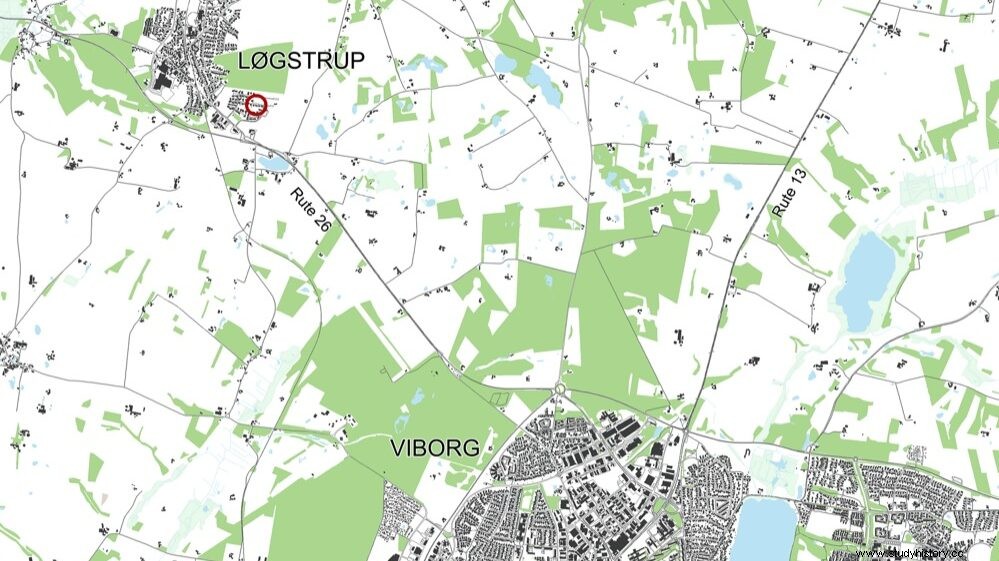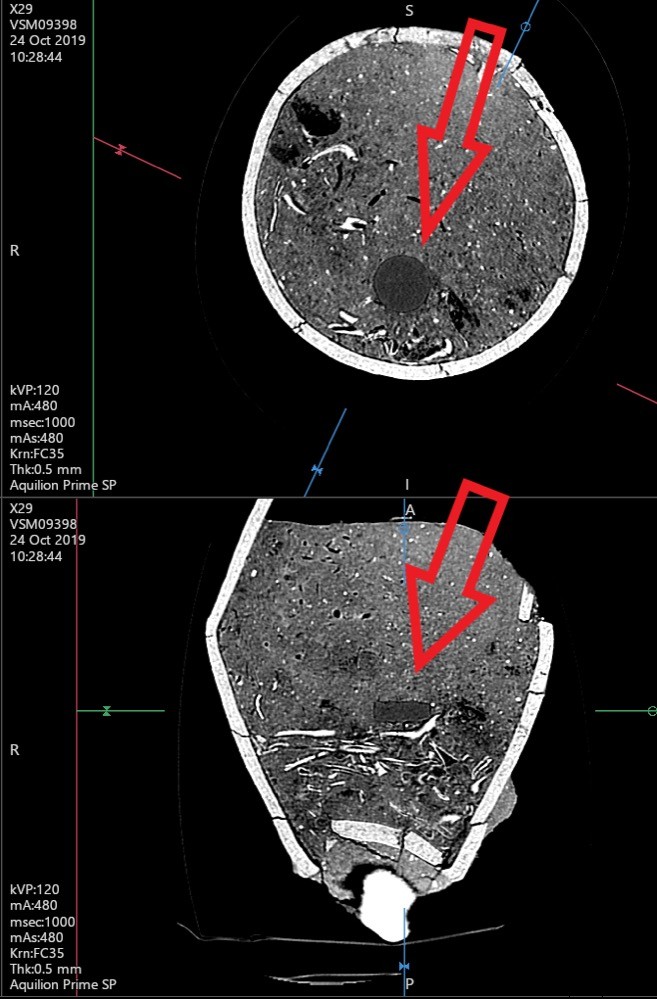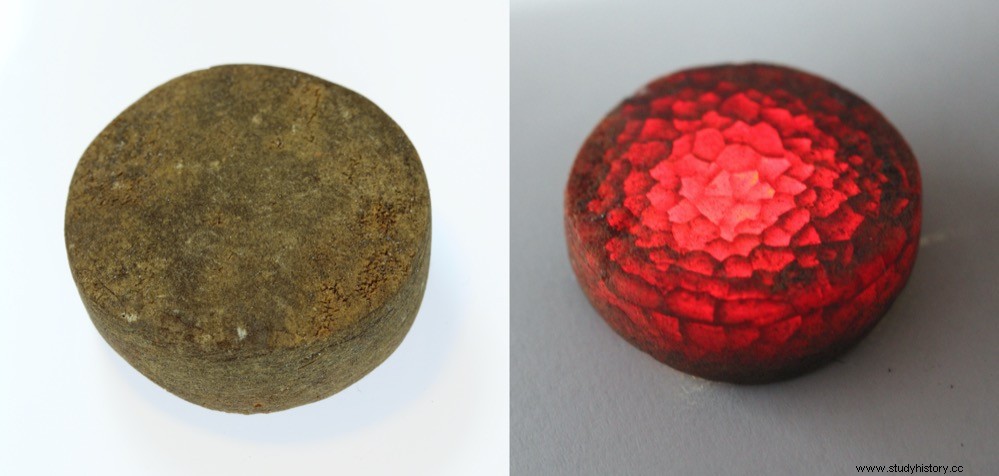In 2008 and 2009, archaeologists excavated a site at Løgstrup, located northwest of Viborg in Denmark. It was a Bronze Age settlement with remains of houses and pits and bronze smelting furnaces, built and expanded in several phases around 900–700 BC, where various objects of bronze, amber, ceramics, and two urns appeared. Funeral homes containing remains of cremation burials.

The two urns were deposited in the Viborg Museum. Ten years later, in October 2019, the ballot boxes were scanned using computed tomography.
And surprisingly, there were no remains of burned bones anywhere in the urns, just ashes.
About halfway through one of them, archaeologists discovered a curious object, which was shaped like a hockey puck in the scanned images.

Once carefully removed, it turned out to be a small, thin slice of amber A disc that measures 3 centimeters in diameter and 0.9 centimeters thick, and which must have been placed in the urn over the cremated remains of a girl.
Amber was highly valued in Bronze Age Denmark, as it was both a commodity and a religious symbol. It was considered a manifestation of the power of the sun. Some Greek sources even describe it as the tears of the sun god, Apollo.
Solar symbology is a frequent motif in objects and sculptures from the Bronze Age.
In this case, the disc could have been placed in the urn as a sign of the person's social position or as a kind of offering for the soul of the dead person to travel to the other world under the protection of the sun. Thus, it was believed that just as the sun traversed the sky during the day, it also traversed the darkness of the underworld at night.

Although at first glance the amber disk doesn't look like much, everything changes when a light is shined behind it. That is when it reveals its true beauty and function as a solar disk. This is a unique discovery in Denmark, the first of its kind found in the area.
Fonts
Viborg Museum.
